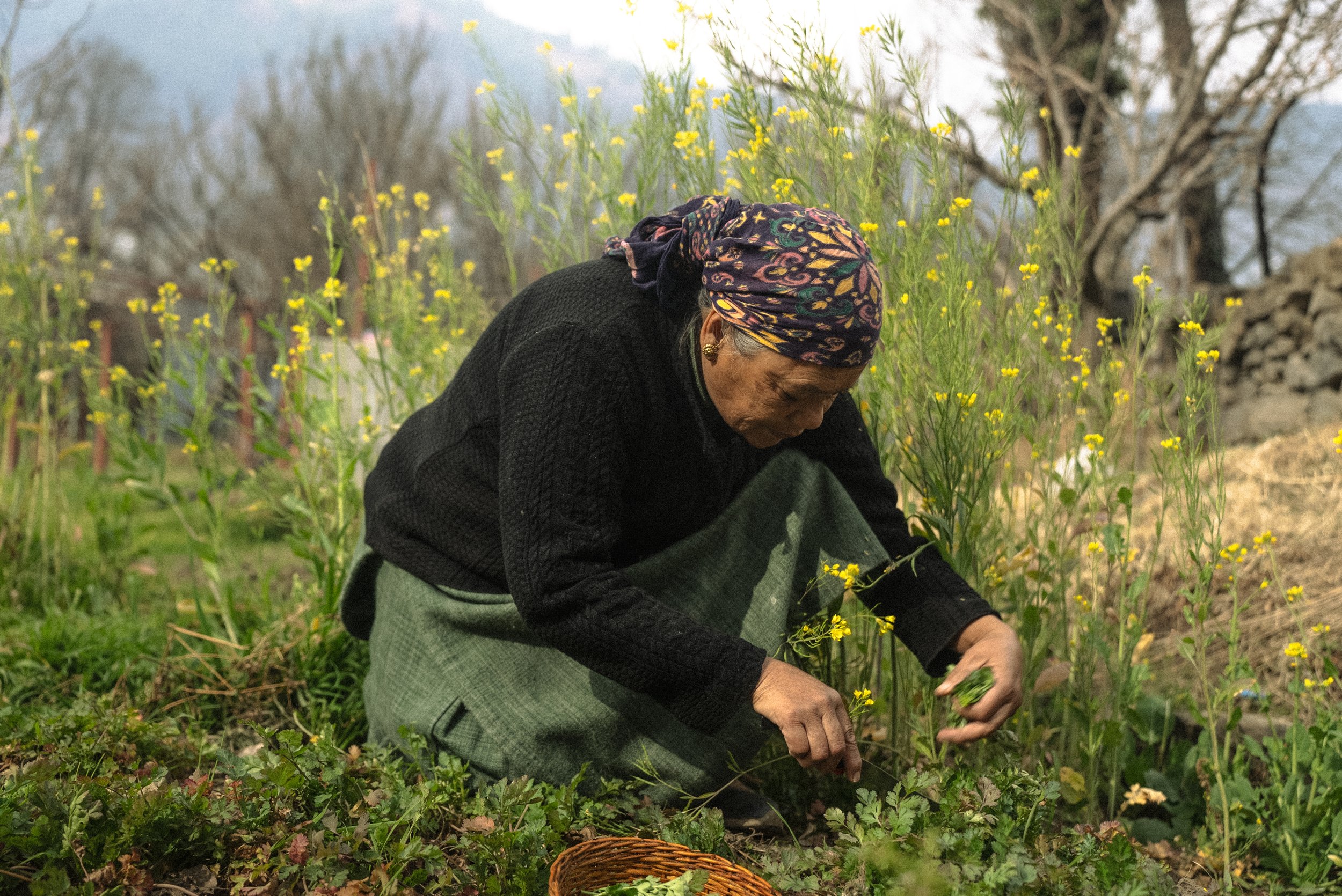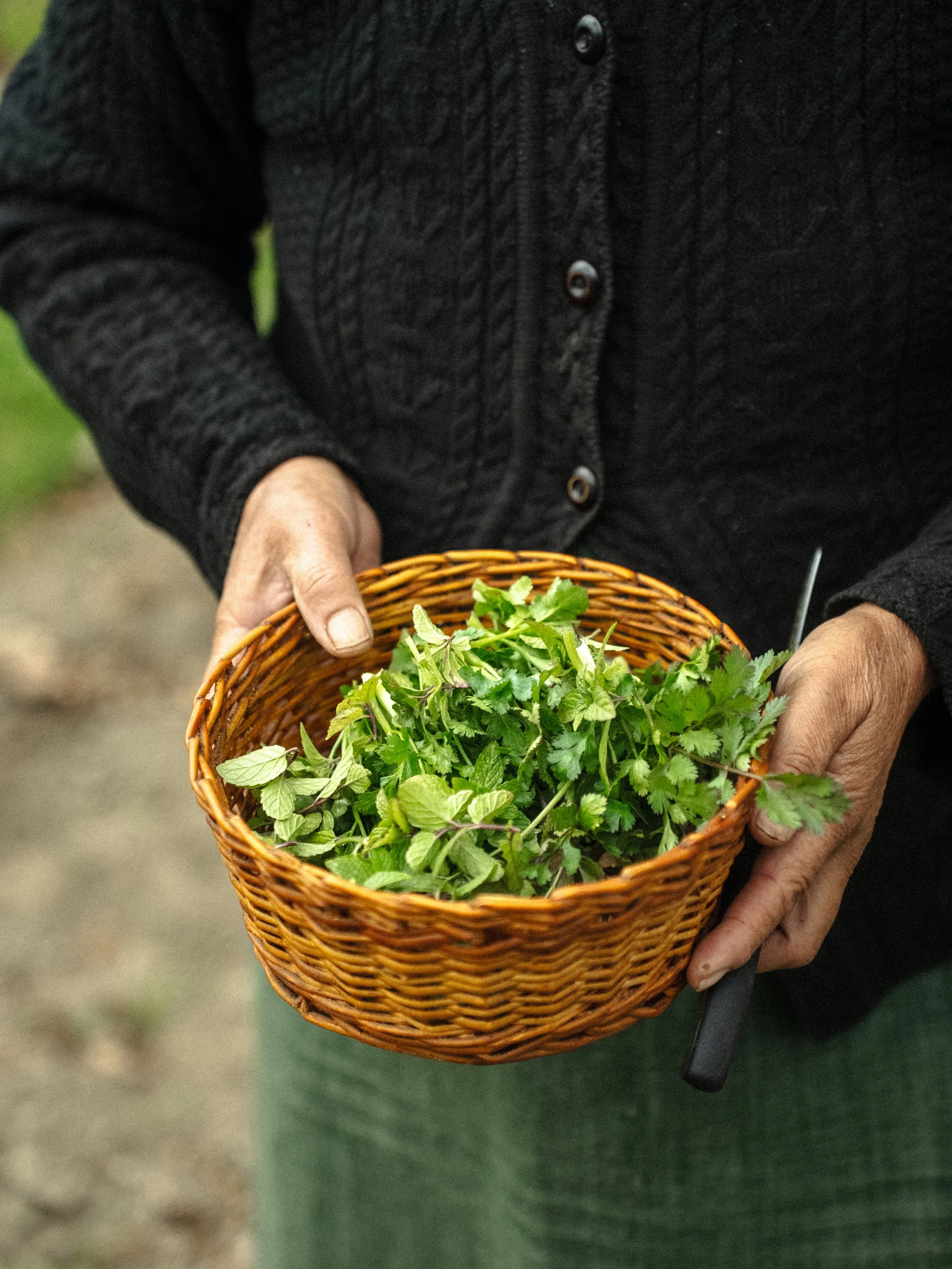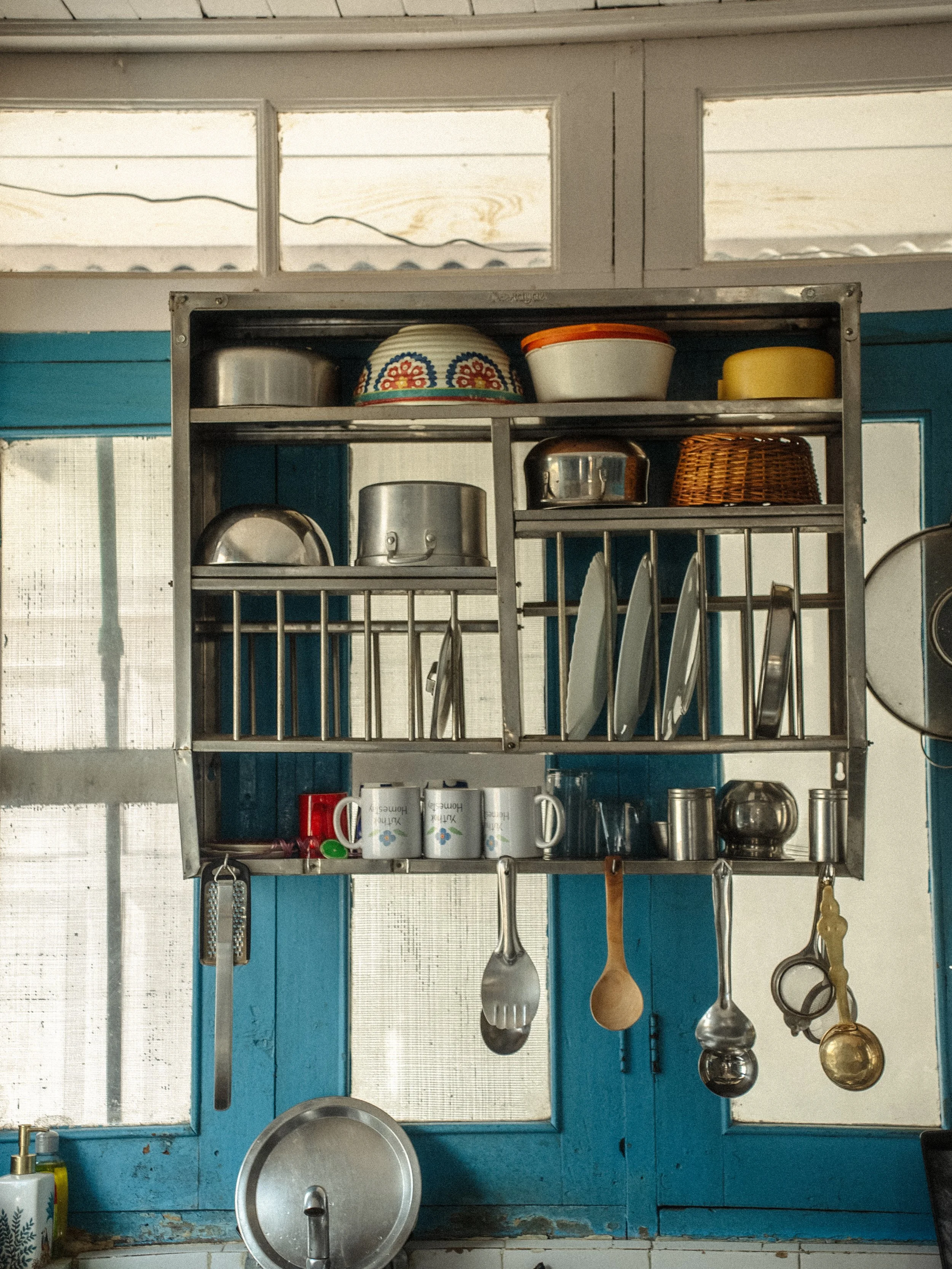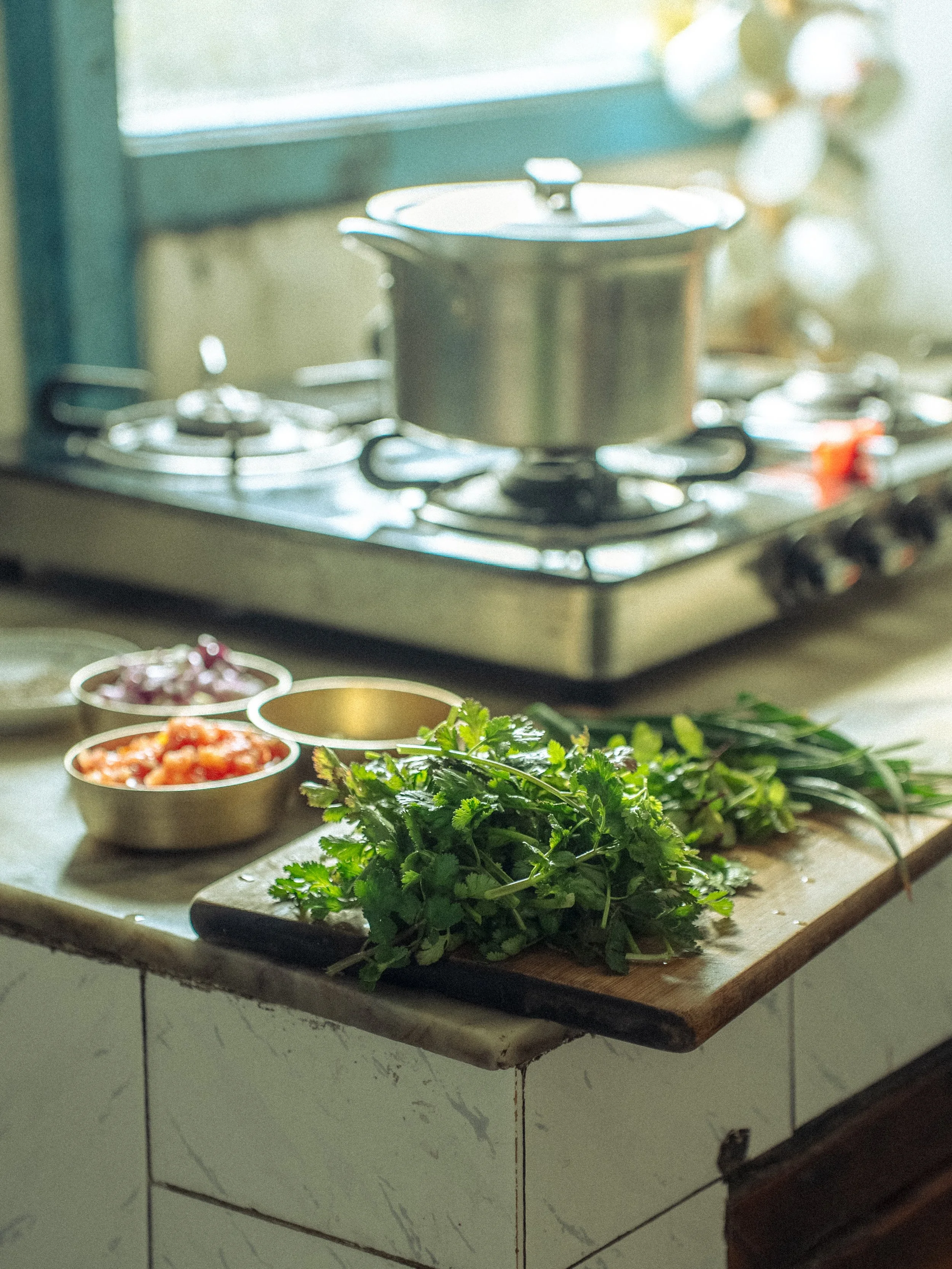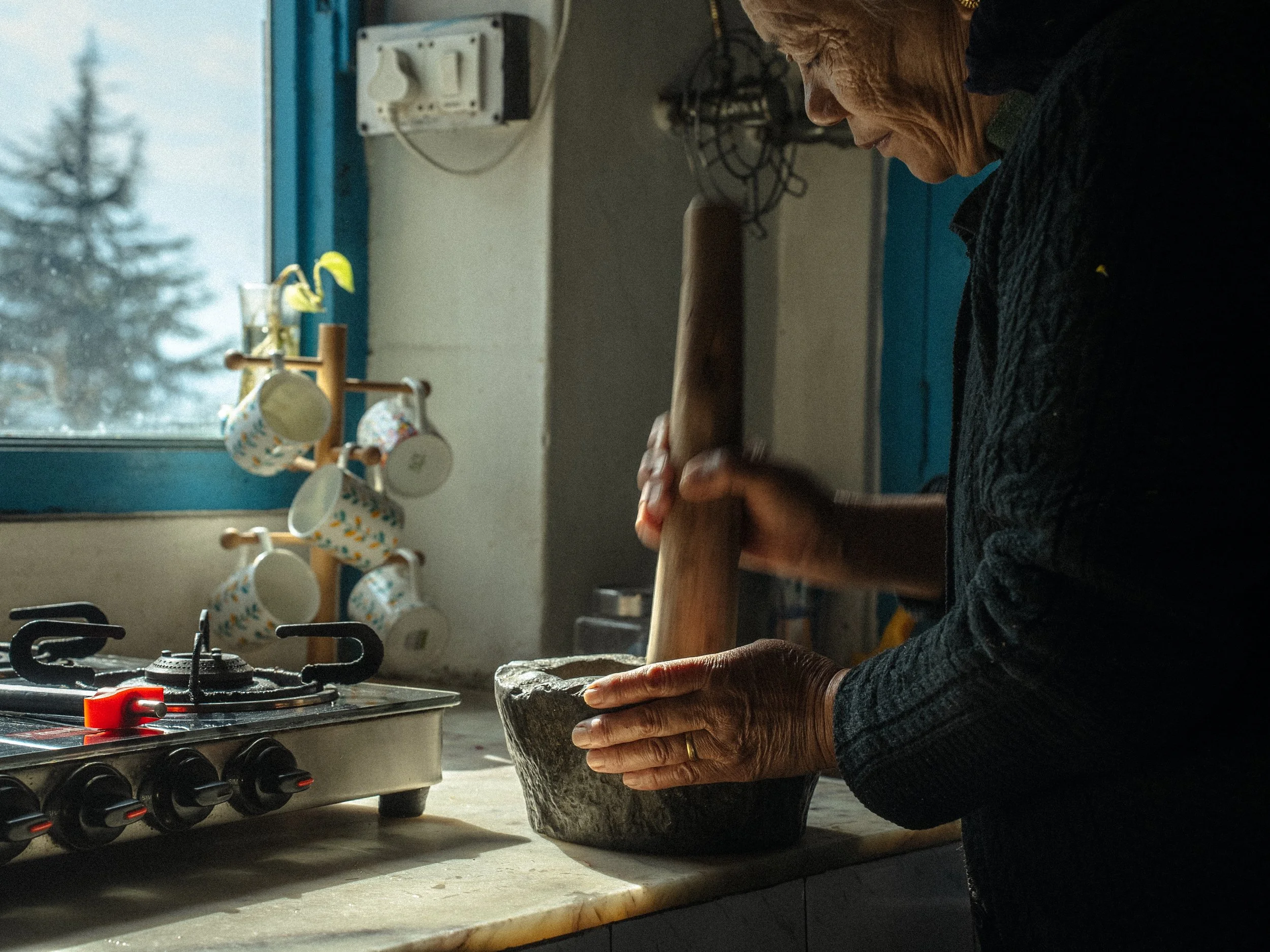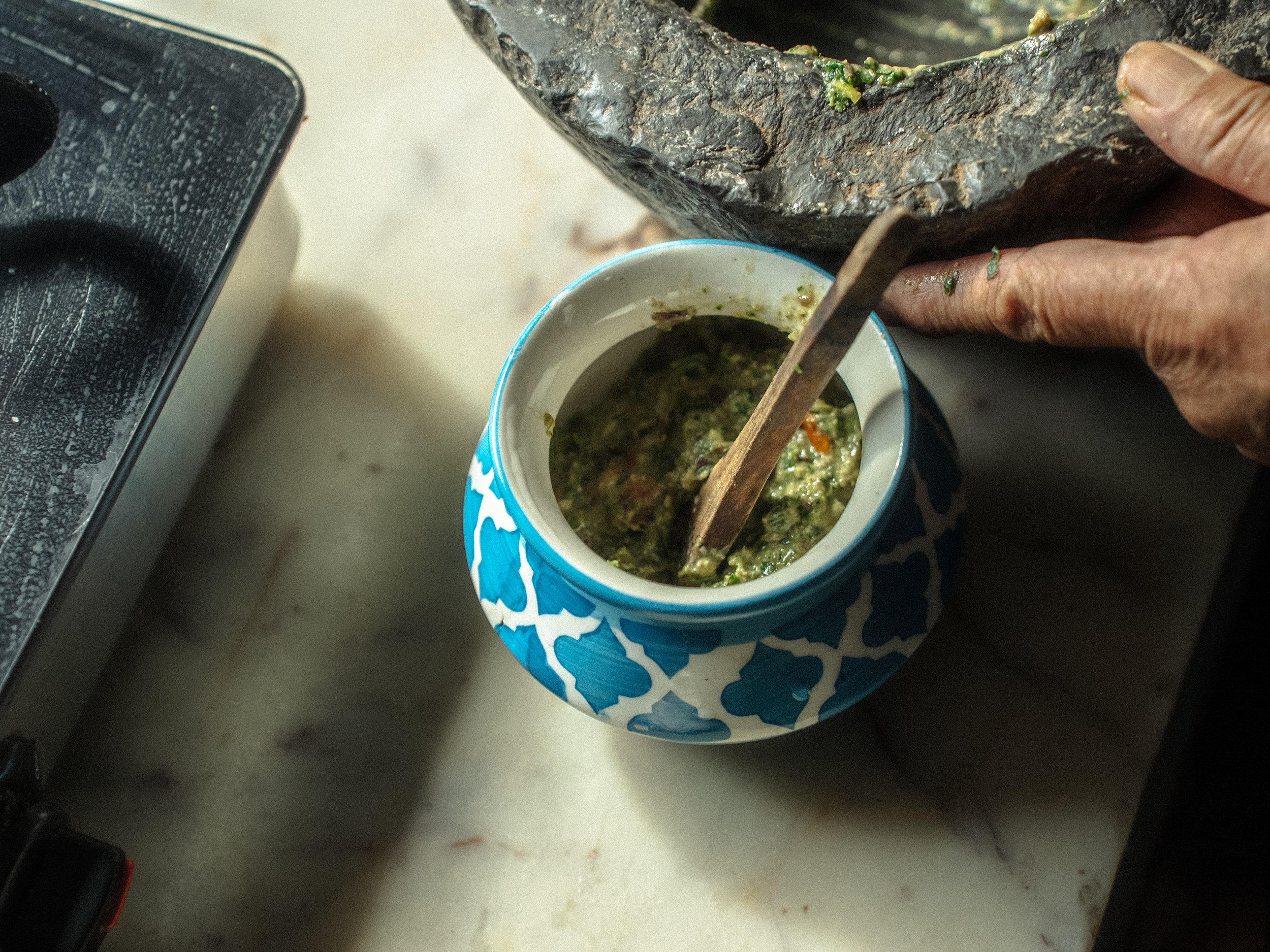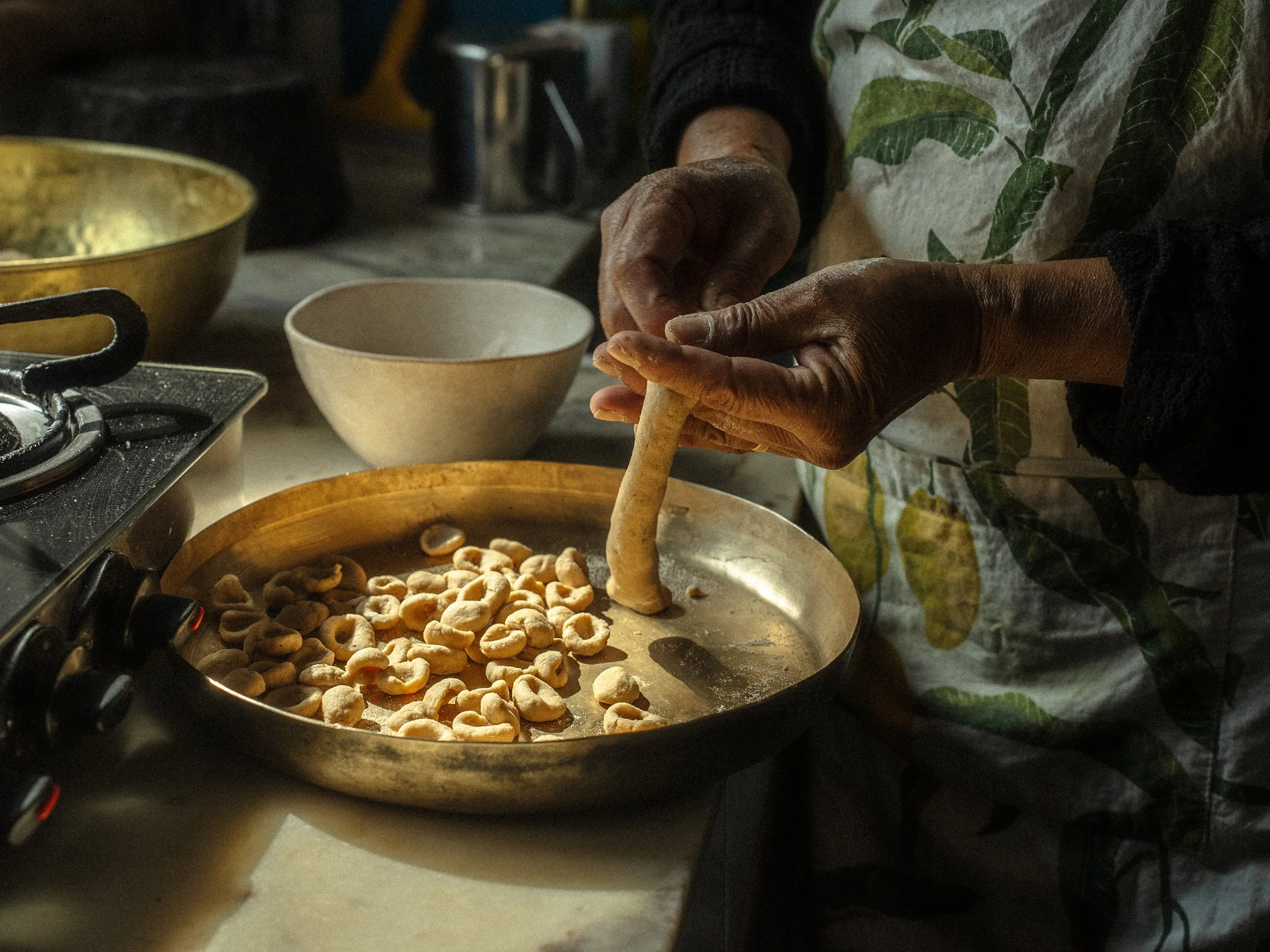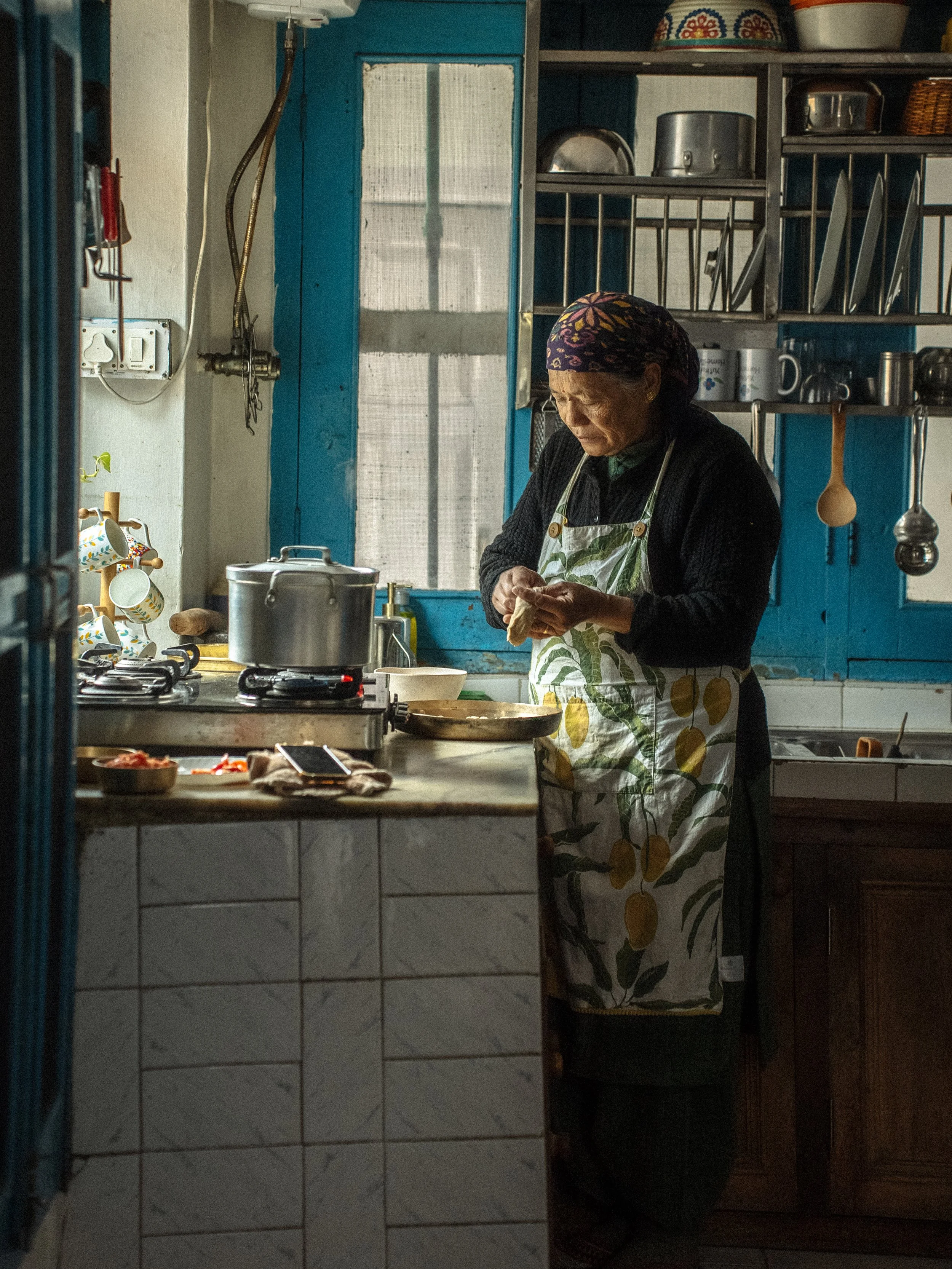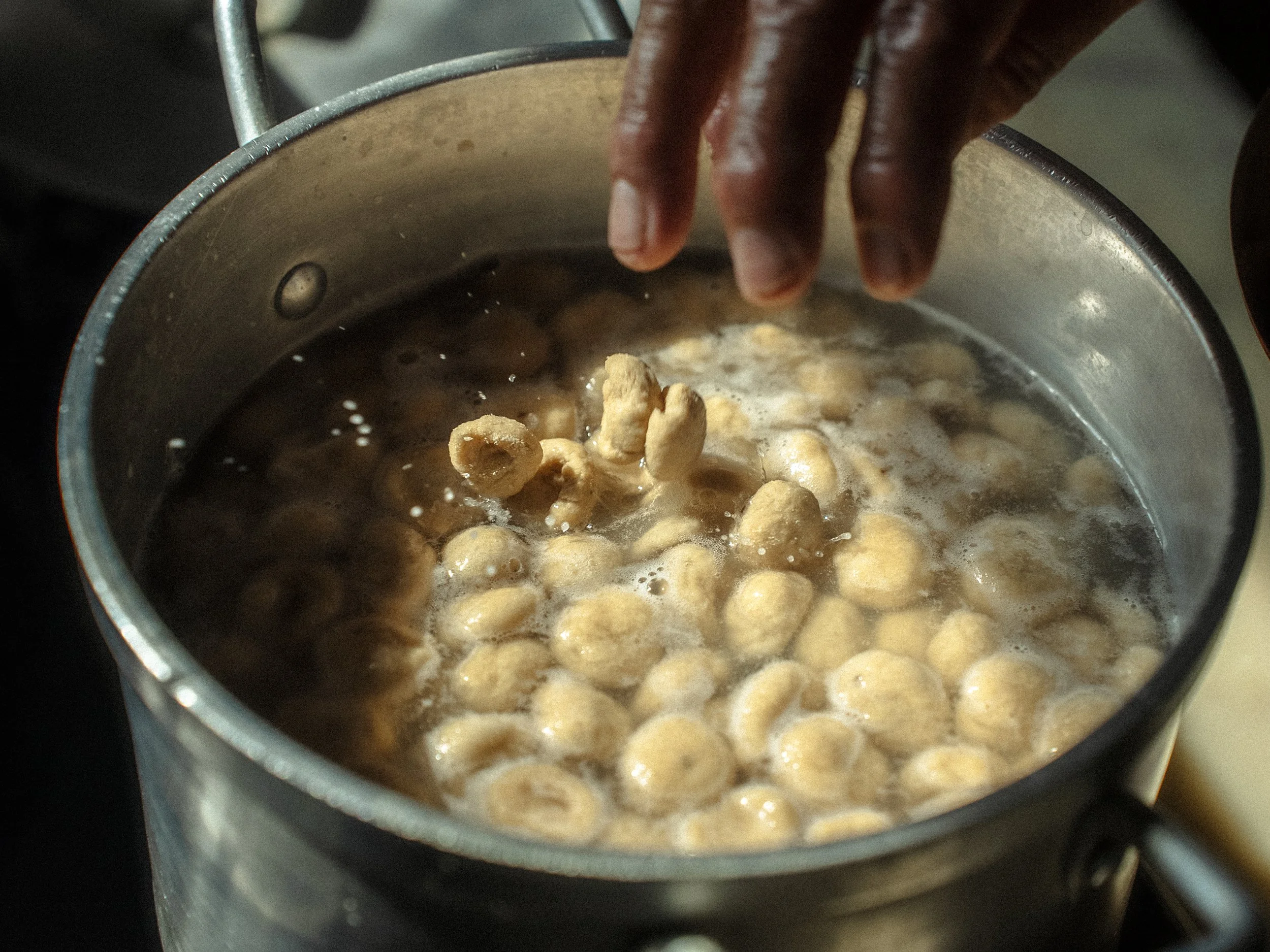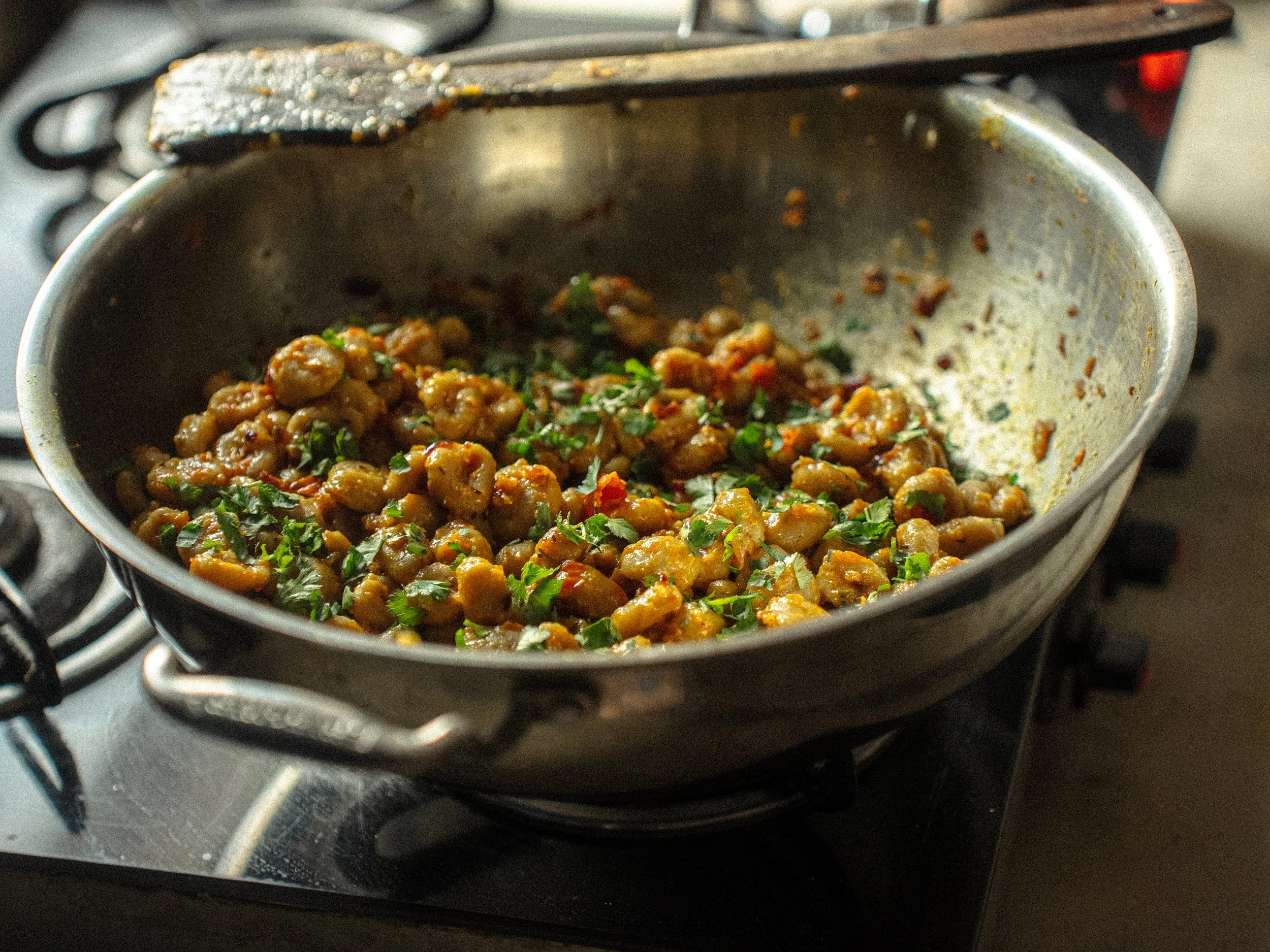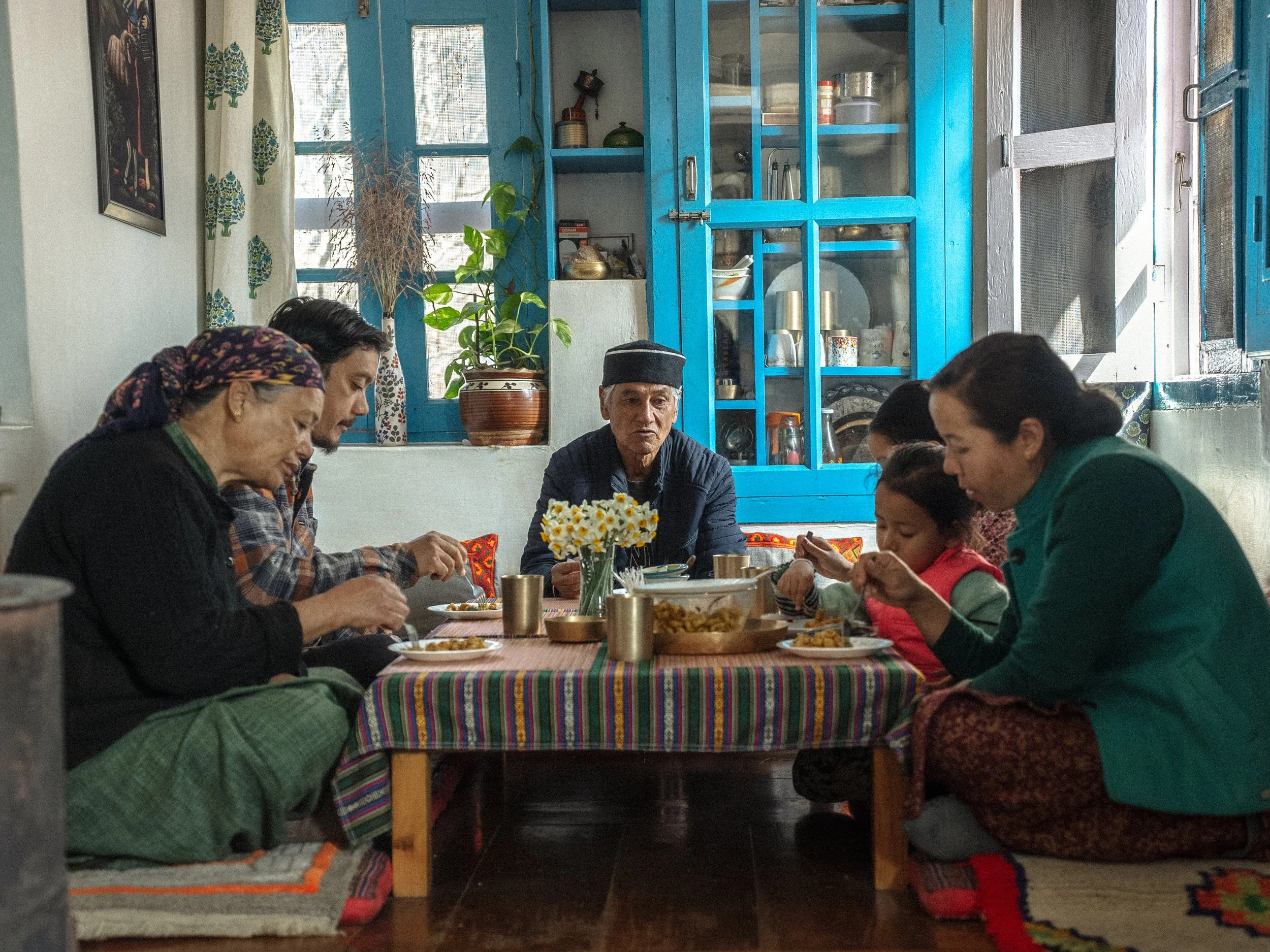#1000Kitchens: Palmo Thakur Rustles up a Lahauli winter Treat, Shunali
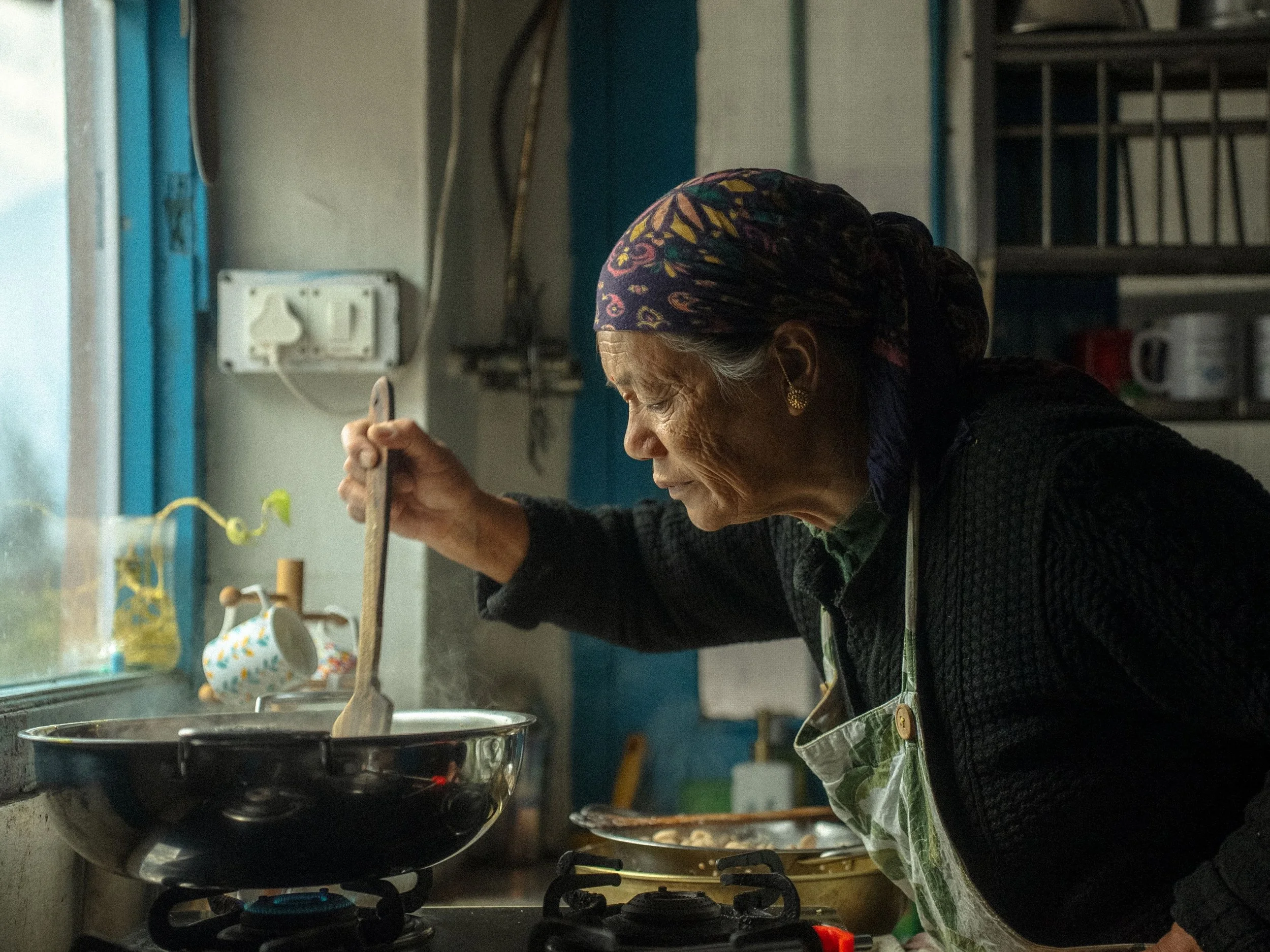
At Goya, celebrating home cooks and recipes have always been at the heart of our work. Through our series, #1000Kitchens, we document recipes from kitchens across the country, building a living library of heirloom recipes that have been in the family for 3 generations or more. In this edition, Sneha Mehta learns about the winter special from Lahaul called Shunali. Made with dough balls and tossed in a savoury sauce, it is a hearty meal that satiates the whole family.
This season’s stories are produced in partnership with the Samagata Foundation—a non-profit that champions meaningful projects.
Palmo Thakur grew up in the hilly terrain of Guskyar — a remote village in Himachal Pradesh’s Lahaul region— where people were few and sources of entertainment even fewer, especially on long, cold winter days. On particularly biting, snowy days, when temperatures below 0 degrees celsius kept all the village kids indoors, they’d beg Palmo’s grandmother to let them help in the kitchen, so she’d devise a scheme to keep them all occupied: together, they’d make large portions of the time-consuming, hearty, versatile Lahauli dish, shunali, in the warmth of the bukhari (hearth) of their thick stone-walled home.
If you mistake a plate of shunali, with its small, kneaded dough balls tossed in a chunky sauce, for a rustic Italian orecchiette pasta, you wouldn’t be the first. But when placed against the colourful, woven, striped Kinnauri tablecloth that's characteristic of Himachal Pradesh at Palmo’s family’s homestay in Kullu, the dish takes on an unmistakably local flair.
In the high-altitude regions of India, such as Lahaul, simple, warming, wheat-based carbohydrates like shunali are an integral part of the local diet. Tucked between the Pir Panjal and Zanskar ranges, at about 3000 meters above sea level, the Lahauli world revolves around altitude. For much of the year, the valley is sealed off by snow — when Palmo was growing up, Lahaul was cut off from the rest of Himachal for nearly six months every winter. The Rohtang Pass, the only road link to Kullu, would close with the first heavy snowfall and only reopen in May or June. This stark, isolated but luminous landscape defined how its inhabitants eat and live. Winter temperatures can drop to -20 degrees Celsius, so hardy crops like barley, buckwheat, and peas that are nourishing, easy to store, and provide heat and energy are crucial. Butter tea (cha süma), curds, and ghee are daily essentials, offering both calories and warmth, while meat from yaks, sheep, or goats is usually dried for preservation. Lahauli cuisine is practical: It blends Tibetan, Ladakhi, and Himachali influences but is ultimately born from centuries of humans adapting to their unforgiving environment.
For Palmo, who moved to Kullu over three decades ago when she got married, making shunali is a reminder of her childhood. Within her intuitive gestures as she kneads dozens of dough balls expertly, memories emerge: of glaciers blocking their route to school, of jumping across rooftops to get across their village, of playing in the snow, and of time spent with their grandmother in the kitchen while their parents worked in the fields.
Her life in Kullu is very different. Yuthok Homestay, run by her son Rajeshwar and his family, sits amid apple and plum orchards that gleam red and purple in late summer. Between these, there are patches of cabbage, peas, and onions, with a view of misty hills in the distance. The family’s primary livelihood comes from these orchards and vegetable gardens, while hosting guests is an extension of their home life. Inside, the dining area retains the mountain tradition of low seating; guests and family members sit cross-legged on the ground, eating together from polished bronze thalis. Around them, the walls are lined with Tibetan art, a quiet nod to the family’s Buddhist faith.
Rajeshwar, Palmo’s son, is both farmer and part-time historian. His shelves are stacked with books on the Himalayas, Tibetan history, and ancient rock carvings — subjects he continues to research and document. Guests who stay at Yuthok often find themselves drawn into conversations about the local environment and Himachali culture. Meanwhile, Palmo and her daughter-in-law tend to the vegetable patches, drying herbs in the sun or foraging in nearby forests for ingredients to use in the homestay’s meals. The family’s two young granddaughters often play nearby or help their grandmother pick coriander or garlic. Every review of the homestay mentions the freshness and authenticity of the home-cooked meals.
To make shunali, Palmo starts with the chutney. Walnuts, salt, green chili, onions, tomato, go into a mortar and pestle (“Never use a mixee!” she warns) with aromatics like coriander and garlic. The chunky chutney takes time to come together manually, but is packed with familiar rustic flavours.
The dough, while a simple combination of flour and water, has a Lahauli twist — Palmo uses kala jeera (black cumin) harvested in the jungles of the region. Then comes the difficult bit: Palmo kneads dozens of small dough discs, with a dent in the center. “This way it holds the masala well,” she says. Fry these in a basic Indian sabzi masala using oil, onions, tomatoes, and spices, and the shunali is ready. Or, for a comforting breakfast or snack time dish, fry them in ghee and top with sattu and sugar. Palmo uses garlic, onions, and chilli grown in their garden.
The shunali she makes in Kullu has a slightly different character from the one she grew up with in Lahaul; the altitude is gentler, the produce more abundant, but the dish remains hearty and textural. Its chewy, doughy bite recalls the satisfaction of meat, yet it is light, wholesome, and complex. Much like the Palmo’s journey, it carries the taste of adaptation. From the memories of a Lahauli childhood to the fresh ingredients grown in their hilly backyard to the community dining experience in the homestay, Palmo’s shunali encapsulates Himachali terrain and life.
RECIPE FOR SHUNALI
Serves 4
Prep Time: 15 minutes
Cook Time: 30–35 minutes
Ingredients
For the Shunali:
500 g whole wheat flour (atta)
½ tbsp salt, or to taste
¾ tbsp safed or kala jeera (white or black cumin) or ajwain
Water, as needed for kneading (firmer than roti dough)
1.5 litres water, for boiling
3–4 tbsp refined oil
For the masala:
1 onion, chopped
5–6 garlic cloves
1 piece ginger (about 1 inch)
½ tbsp garam masala
½ tbsp haldi (turmeric)
½ tbsp dhaniya powder (coriander powder)
3–4 tomatoes, ground in a blender or crushed
Salt, to taste
Fresh coriander, chopped (for garnish)
For the green chutney:
2 green chillies
1 onion
5–6 garlic cloves
5 stalks fresh mint (pudina)
5 stalks fresh coriander
3–4 walnuts
1 tomato (optional)
Salt, to taste
Method
In a large bowl, combine the atta, salt, and safed/kala jeera or ajwain. Add water gradually and knead into a firm, smooth dough — slightly stiffer than roti dough. Let it rest for 5–10 minutes while you prepare the boiling water.
Bring 1.5 litres of water to a boil in a large pot. Pinch off medium-sized portions of dough and roll them into balls. Press your thumb into each ball to form a small indent.
Drop the shaped dough gently into the boiling water. Cook uncovered for 15–20 minutes, until the pieces rise and feel firm. Drain using a sieve and let the boiled shunali rest.
Heat the oil in a kadhai.
Crush the onion, garlic, and ginger in a mortar-pestle (or chop fine). Add this mixture to the hot oil and sauté until fragrant.
Add garam masala, haldi, and dhaniya powder; cook for 1 minute. Add the crushed or ground tomatoes. Cook on medium heat until the colour deepens and the masala looks glossy.
Add the boiled shunali to the masala. Check seasoning; add more salt if needed.
Mix well so each piece is coated. Cover and cook for 2–5 minutes, allowing the gravy to thicken and cling to the shunali. Garnish with fresh coriander.
Combine all ingredients for the chutney in a blender. Blend lightly — do not make it too smooth. For best taste, crush by hand in a mortar-pestle. Adjust salt and serve fresh.
Words by Sneha Mehta. Photographs by Terrence Manne.
Special thanks to our partners.
ALSO ON GOYA
